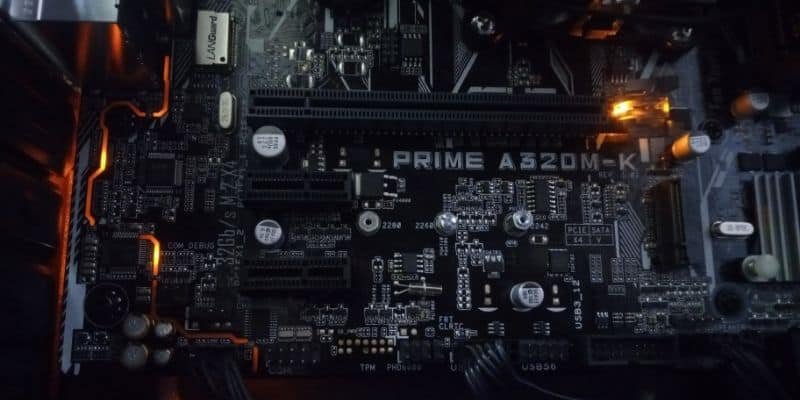A motherboard is the central and crucial component of any computer system. Without a motherboard, a computer a no more than a box. It is a central circuit hub that connects all components and peripherals to the computer. It allows all the components such a Central Processing Unit (CPU), graphics card, HDD and memory to receive power from an attached power supply.
Motherboards are important because they allow you to expand your PC’s capabilities by adding additional hardware such as hard drives or RAM (Random Access Memory). To add functionality to your computer, motherboards also provide a place for expansion cards.
For example, to play music on your computer, an audio card is required. Or if you wanted to connect your computer to a TV, you would need a video card.
What is a Motherboard?
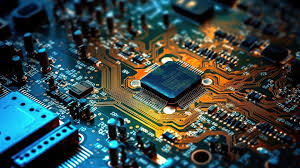
Also called a printed circuit board (PCB), a motherboard contains various electronic components with their principal components. . Mother board is the foundation of any PC For the proper functionality of the motherboard’s components, make sure to install the necessary drivers. From occupying the expansion cards to delivering the power using ATX Power Pin connectors, the role of a motherboard in any PC is indispensable.
Daughterboards are the circuit boards that are installed on the top of the motherboard. These are the specialized circuit boards that connect the crucial internal components such as the graphics card and hard disk with the motherboard.
What Are the Components of Motherboard?
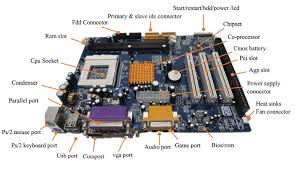
Various Motherboard components are:
- RAM Slot: To install the memory
- CPU Socket: To install the CPU
- BIOS: To configure the hardware. it is a low-level operating system at the most basic level.
- SATA Interface: Primary interface for storage devices such as optical drives such as CD/DVD drives and hard disk drives
- Ports: Peripheral connectivity ports, USB and video ports.
- PCIe Interface: To connect the HSIO (High Speed Input/Output) devices along with the myriad of components such as Graphics Cards and SSD.
- Motherboard Chipset: Known as the motherboard’s brain, it transfers information to and from devices and CPU To maintain the performance of the motherboard and its components, cleaning the motherboard is crucial.
- POST Check: To determine if there is any fault in the hardware
- Sound Card: For connecting audio
- Network Connectivity: Wi-fi or Ethernet connectivity.
6 Reasons: Why Motherboards are Important?
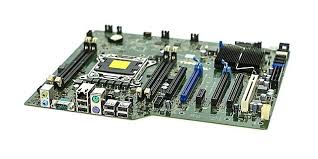
As we have seen how motherboard is the central part of any PC, here are the 6 convincing reasons why motherboards are important:
1. House to BIOS
One crucial chip found on a motherboard is a ROM chip for BIOS. BIOS offers all the necessary instructions as well as settings for the computer to boot.
Without a BIOS chip, your computer would NOT start. If your motherboard fails, the BIOS chip might not work correctly. Learn what causes motherboard failure
BIOS stands for basic input/output system and it is the first program the processor accesses to get the computer started.
BIOS is also the key program that handles data flow from the input peripherals like keyboard, mouse, printer and the output peripherals like a monitor.
2. Bridge Among the Other Components
Apart from connecting external components The motherboard itself is packed with essential components, including buses that transmit signals that transmit signals from one component to one component to.
Modern motherboards do not have a bridge for north and south in separate ways. Older motherboard had an independent chipset for north as well as south to manage different interfaces.
Modern motherboards come with only the South Bridge, which is often referred to by”the motherboard chip.
3. Responsible for Hardware Expansion
SATA interface and PCIe interface are the two components that are responsible for expansion capabilities. Different motherboards are able to different types of memory, video cards, CPUs, Peripherals, disk drives etc.
4. Hold the CMOS Chip and Battery
The CMOS battery is an essential component because it keeps the CMOS chip, which keeps the configurations of the system functioning regardless of whether the system is turned off.
The motherboard is the home to this battery. This allows you to keep data such as the most important settings for your hardware and system time. This means that you might have noticed your computer is likely to “remember” the time, even when it is shut down.
The CMOS battery that is within the motherboard ensures that the clock is operating all the time the system is not in use. There are several ports and ports to connect with Peripheral component interconnect (PCI), Accelerated Graphics Port (AGP), the RAM slots, and USB ports.
5. To Sync The Various Tasks
The motherboard contains a miniature Quartz crystal acting as the system’s clock. It makes sure that the other components of the motherboard are in sync.
The clock emits an indication after a certain time. This allows all components to know when to be working and when they should not. This refrains the different components from sending out a signal in a time that those components that are intended recipients aren’t prepared to accept it.
The other components are only active in the event that the speed of the computer is on and when it’s at a low level, they are also dormant. The change occurs many times per second, so it’s virtually impossible to spot.
For Power Supply to Other Components
Motherboard is the main contact point for all the computer components including the main power supply connections loaded over the motherboard.
This allows the subsystems on the board as well as other components connected to it to gain access to electricity.
But, larger components like hard disk drives and graphics cards Drives need a power source to power supply units. Power Supply Unit.
Things to Consider Before Buying a Motherboard

You are aware that a motherboards are an essential part for PC builds.
As a consumer it’s equally important to know what specifications of the motherboard are crucial to YOU!
Motherboard Chipsets
Motherboards are distinguished by the chipsets they use. There are low-end chipsets and premium chipsets to choose from.
These are the most popular chipsets from each Intel as well as AMD designed for the consumer PC:
Intel Chipsets:
- H Series such as H310 : It is an entry level chipset that is meant for budget laptops.
- B Series such as B460 : These are a good choice for Mid-range builds
- Z Series such as Z590 : It is meant for overclocking support and is compatible with premium builds.
AMD Chipsets:
- A Series such as AMD A520 : It is an entry level chipset that is meant for budget laptops.
- B Series such as B550: It is a mid range chipset that is compatible with gaming laptops.
- X Series such as X570: it is a high range chipset that is meant for High-performance PC builds.
Number of PCIe Lanes
Higher the PCIe Lanes signify higher the expansion card installation to your PC. Premium chipsets for motherboards come with high PCIe Lanes. Cheaper motherboards on the other hand have fewer PCIe expansion slots.
Mutiple-GPU Support
Premium grade chipset features multiple-CPUs support while budget grade chipset are not able to support the multiple-CPU.
Overclocking
If you are a serious gamer, this is a crucial factor to consider. Only high end motherboards are able to support overclocking to offer an intense gaming session. The Intel H series and AMD A series are not able to support CPU’s overclocking.
PCIe Version call karo
Newer chipsets are able to support the newer PCIe version. Each PCIe version increases the speed of transfer by a factor of two in comparison to the previous version.
With the latest PCIe Version, the computer will be able to handle more efficient and faster expansion cards.
For instance, if your computer has a PCIe v4.0 board and you have a PCIe v4.0 board, you will be able to connect the more powerful Gen 4 NVMe SSDs that have transfer speeds of 500 Mb/s (compare this with the average HDD that has a transfer speed of 200MB/s).
Compatibility of Motherboard and CPU
The newer chipsets come with support for newer CPUs. If you want to install the newer 10th or 11th gen Intel CPU, the newer chipset LGA1200 and Z590 are compatible. For LGA1151 sockets for 8th and 9th Gen CPU are compatible with older Intel Z390.
What are VRMs?
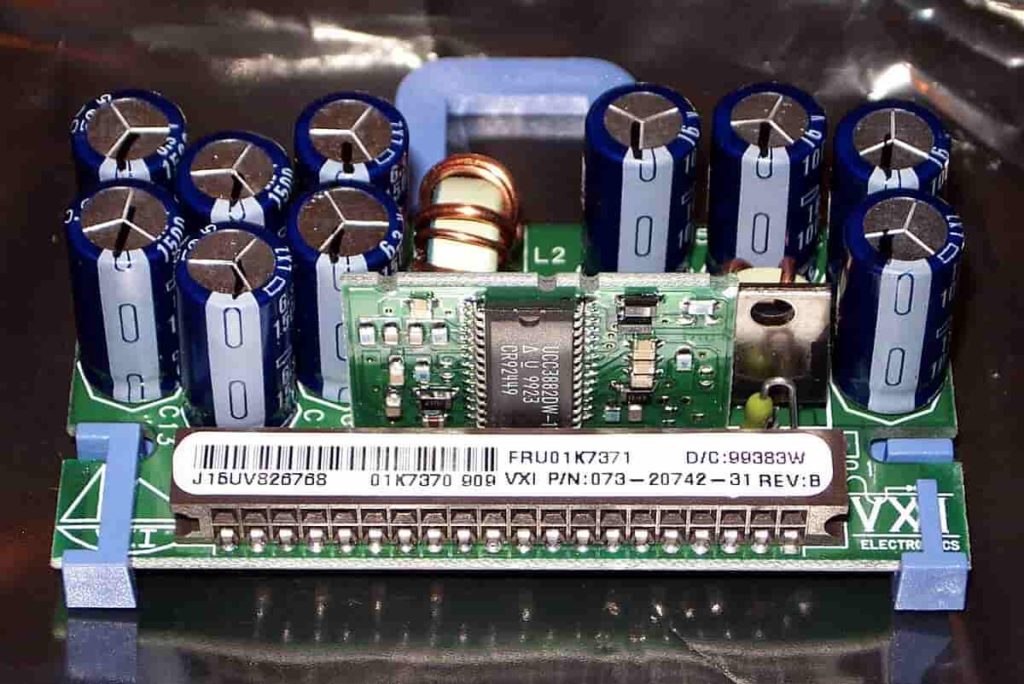
Motherboard VRM, also known as Voltage Regulator Modules are vital electrical subcomponents that reduce the voltage to a level that the CPU is able to use.
VRMs are basically an inverter that can lower the 12V that is used by the motherboard to around 1.5V utilized for the CPU.
The more VRMs the motherboard contains better the motherboard is at controlling the voltage of the CPU. Therefore the CPU’s overclocking capability is dependent on the details of what VRM you have.
Conclusion
What is the significance of a motherboard? In essence, the motherboard acts as the orchestrator for everything that is a part of the computer. It connects components and allows communication to take place.
Motherboards are loaded with characteristics that make them stand out from one another. As a buyer, you need to assess your needs and your budget before deciding on the best one for your needs.
